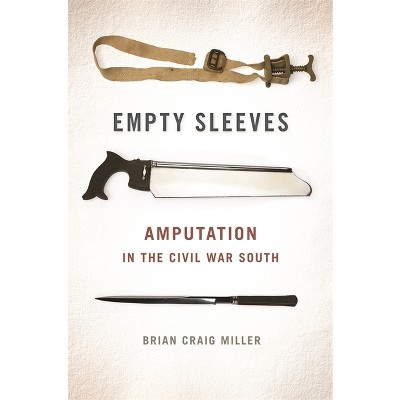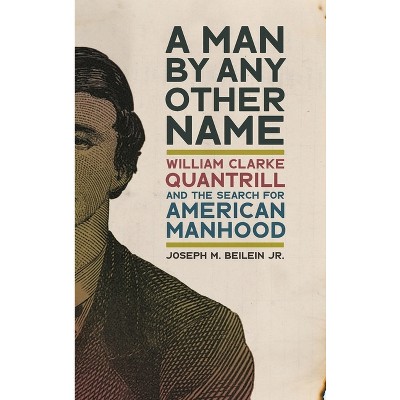About this item
Highlights
- In the popular imagination, Civil War disability is virtually synonymous with amputation.
- About the Author: SARAH HANDLEY-COUSINS is a clinical assistant professor of history and associate director of the Center for Disability Studies at the University at Buffalo.
- 204 Pages
- History, United States
- Series Name: Uncivil Wars
Description
About the Book
"Disabled soldiers and veterans occupied a difficult space in the Civil War North. The realities of living with a disability were ever at odds with the expectations of manhood. Disability made it difficult for soldiers to adhere to the particular masculine standards of the Union Army, yet when soldiers were able to control their bodies in order to fit manly ideals, they were met with suspicion when they requested accommodation or support. The very definition of masculine disability was ever in dispute as soldiers, physicians, lawmakers, bureaucrats and civilians each questioned what made a war wound authentic. Further, they each pondered what role disabled soldiers should play, whether in the course of war, in the progression of medicine, or in Gilded Age politics. It is in this tension, between the demands of masculinity and the realities of disability, that we can see the murkier undercurrent of the history of disabled Civil War veterans: that even when surrounded by the triumphant cheers and sentimental sighs that praised war wounds as patriotic sacrifices, disabled Union veterans faced enormous difficulty as they negotiated a life spent walking the fine line between manliness and emasculation. Sarah Handley-Cousins's manuscript makes an important contribution to the burgeoning field of the Civil War veteran experience, Civil War medicine, masculinity, and the soldier transition to civilian life. She breaks new ground with her focus on invisible wounds, as most scholars have concentrated on amputees"--Book Synopsis
In the popular imagination, Civil War disability is virtually synonymous with amputation. But war affects the body in countless ways, many of them understudied by historians. In Bodies in Blue, Sarah Handley-Cousins expands and complicates our understanding of wartime disability by examining a variety of bodies and ailments, ranging from the temporary to the chronic, from disease to injury, and encompassing both physical and mental conditions. She studies the cases of well-known individuals, such as Union general Joshua Lawrence Chamberlain, alongside many cases drawn from the ranks to provide a more comprehensive view of how soldiers, civilians, and institutions grappled with war-related disability in the Civil War-era North.
During the Civil War and long after, the bodies of Union soldiers and veterans were sites of powerful cultural beliefs about duty and sacrifice. However, the realities of living with a disability were ever at odds with the expectations of manhood. As a consequence, men who failed to perform the role of wounded warrior properly could be scrutinized for failing to live up to standards of martial masculinity. Under the gaze of surgeons, officers, bureaucrats, and civilians, disabled soldiers made difficult negotiations in their attempts to accommodate impaired bodies and please observers. Some managed this process with ease; others struggled and suffered. Embracing and exploring this apparent contradiction, Bodies in Blue pushes Civil War history in a new direction.Review Quotes
Bodies in Blue is an important addition to Civil War scholarship but also an enjoyable read for anyone interested in the Civil War, veterans, and the medical aspect of the war.--Kathleen L. Thompson "The North Carolina Historical Review"
In recent years, historians of the American Civil War have increasingly turned their attention to studying the "dark" side of the war: the trauma, the devastation, the ruin, and despair. Sarah Handley-Cousins adds to this growing scholarship with her consideration of the broader social and cultural understanding of war-related disabilities in the Civil War North. . . . Bodies in Blue deserves to be on every Civil War reading list, as it highlights just how much the war affected many of those who fought in it.--Angela Riotto "H-SHGAPE"
It makes a valuable contribution to the literature by bringing together in one accessible volume several of the approaches taken by historians of recent years, providing a well-written book that could work very well in undergraduate and some graduate courses. The scholarship is deep enough and the coverage is broad enough to give nonspecialists and students a very good introduction not only to the true cost of the Civil War but also to the attitudes of veterans and nonveterans that so powerfully reflected the moral and medical assumptions of the era.--James Marten "Journal of African American History"
When we think of Civil War disabilities, our thoughts commonly turn to legions of brave amputees, navigating life with the highly visible marker of their wartime sacrifice. In this deeply researched and theoretically sophisticated book, Sarah Handley-Cousins tells a much more complex story of the illnesses and injuries that Civil War soldiers and veterans endured. . . . This is a story about how individuals and institutions battled over how bodies should be defined and categorized and treated by the state. This is a very important book.--J. Matthew Gallman "author of The North Fights the Civil War"
About the Author
SARAH HANDLEY-COUSINS is a clinical assistant professor of history and associate director of the Center for Disability Studies at the University at Buffalo. She is the author of numerous print and digital publications, including articles in the Journal of the Civil War Era and the New York Times DisUnion series. She is an editor of the popular history blog Nursing Clio, as well as producer of Dig: A History Podcast.











